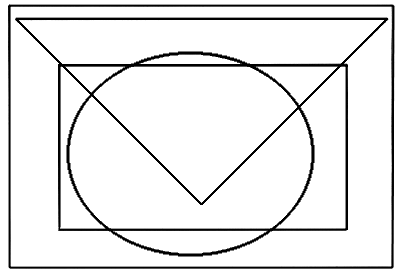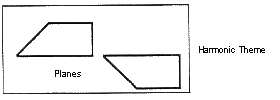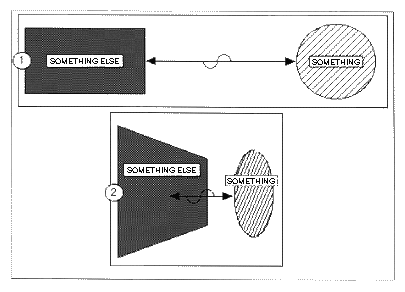Connections Between Artistic Expressions
All artistic expressions - the visual arts, music, theatre, dance or poetry - are related, and an understanding of what is contained in the "art" concept is an integral part of developing one's artistic skills. This entails being able to speak about art in general terms without relating it to a specific means of expression. If you want to learn to play the piano, for example, it is useful to learn notes. It is also important to be familiar with musical styles and to know what characterizes the works of prominent composers as well as important pianists. Yet in order to fully understand the skills required to play an instrument and how to put knowledge of music to use, one must also be familiar with aesthetics and art theory. What does it mean when we say that music is but one of several artistic expressions? What does it mean when we call musicians, painters, dancers, actors and authors artists?
We Are Not Just Musicians
A broader understanding of any subject includes the recognition that knowledge and skills within a certain field are not confined to that expression alone. A good musician has a sense for and understanding of other artistic expressions as well. While music may be your area of specialization, art is your profession. In other words, a musician is a competent artist who masters not only his/her own field but has an understanding of the phenomenon of making.
To develop oneself as an artist is to develop as a person as well. There are several premises that define this connectedness between the arts:
1. All artistic expressions share certain common characteristics.
2. Artistic competence transcends specific fields or expressions.
3. In order to understand what is common ground between the arts, it is necessary to reflect upon one's own art in light of concepts within art theory, aesthetics and philosophy.
What are these concepts that connect differnt artistic expressions? The art work may be considered as a phenomenon, both as a thing in itself and as an experience. That is, a novel, painting or musical piece are compositions of different elements, as well as an experience for the viewer/listener. Composition concerns the making of a work, while dramaturgy relates to how a work is experienced, the work's dramatic aspects.
One aspect of composition in the graphic arts, for example, is relative scale. Depending on viewing angle and distance to a work, the eye will notice the overall composition of large elements or focus on details - the composition will change character. Thus it is important to determine the distance you want in relation to a work. Seated on a plane looking down on Paris, for example, would provide a completely different description of the city than would wandering down the streets.
This way of viewing art - considering relationships such as near and far, whole and detail - plays an important role when joining the concepts composition and dramaturgy in an artistic context.
Dramaturgy is related more to the receiver, while composition is usually considered the artist's doimain. While not all viewers/listeners have a relationship to composition, the artist ought to have a sense of dramaturgy - a relationship to "drama" and its essence. When we describe a work's composition, we speak in terms of "balance" and "contrast between the individual elements." When discussing the interplay of compositional elements, however, in terms such as energy, tension, atmosphere, temperament, etc., we are actually describing a composition's dramatic qualites or "dramaturgy." Thus "composition" describes the placement of elements in a work, while "dramaturgy" describes the affect of the composition in time and space.
The span between these concepts, often thought of as representing a contrast between "cold" composition and "warm" dramaturgy, creates a field for investigation that crosses artistic genres.
Several important themes, concepts and ideas follow here that may be used as an introduction to the characteristics shared by different artistic expressions:
Placement and Form of Visual Elements
In order to understand a composition's character, we can reduce elements to their most simple forms; in the two-dimensional image to square, circle and triangle,


in the three-dimensional image to cylinder, cube, cone and sphere.

In musical representation we find dots, lines and surfaces.



It is often possible to consider the composition of elements based on how they are situated, whether they are placed next to, in front of, or behind each other.

In music, elements either follow one another or are heard at the same time.
Elements and their Distinguishing Characteristics
Individual elements may be discussed in terms of their structure (construction), texture (surface characteristics) and contour (shape). These are perhaps the most apparent similarities between artistic expressions. We may, for example, describe a structure as varied or simple, a texture as open or dense, or a contour as sharp or rounded. Click here to listen to an example from Giacinto Scelsi: "Pfhat," second movement, and attempt to see a connection with the drawing below.

Relationships between Elements
There is always an aspect of contrast between different elements in a composition, described in terms of "more" or "less" alike. If there is a large differnece between elements - in their structure, texure and shape, we speak of a large contrast between the composition's separate parts. When the elements are quite similar we say that there is little contrast. Click here in order to listen to an example from Giacinto Scelsi: "Pfhat," fourth movement, and attempt to relate the music to the visual representation below.

Behaviour of Elements
Some elements alter their character without becoming something else, where we speak of variations rather than transformations.
There are many ways in which elements in a composition may be developed, both in space and time. One way of understanding what happens in space is to consider the relationship between foreground and background, often in conjunction with other fields of indeterminable space. Time is understood as what happens before, during and after.Click here to listen to an example from Giacinto Scelsi's "Pfhat," first movement, and consider similarities between the music and the illustration below.

Art and composition have been discussed in the previous pages. In the following section, the dramatic aspects of art works are considered; how different compositions are experienced and not only how they are made.
Affects of Elements
A composition will always consist of something and something else. (That something is one thing implies that it is not something "else.") When one speaks of an experience of something in conjunction with something else, we understand that the result is a third "something," the affect of the one on the other. This is called interaction.

All elements in a composition have an interactive relationship to one another. When we speak of experiencing of a work, whether it is a musical composition, theatre performance or painting, we refer to the cumulative, total affect of the interaction of all of the elements. Click here in order to listen to an example from Giacinto Scelsi's "L'Ame Ailée," and to follow the development of the two violin tones.
Creating Interest
Elements in a composition will capture our interest and attention in different ways; those which move are (immediately) more
interesting than static elements; strongly contrasting elements are more interesting than those with little contrast to something else, etc. In other words, everything that "happens" in a composition will be more or less interesting! Thus it is important when attempting to understand a work to think about what makes the different elements interesting; are there many or few interesting events? Is there a main element that captures the interest, or have all aspects been assigned equal weight? Click here to listen to an example from Giacinto Scelsi's "Suites 8II".
Dynamics
The interaction between a composition's elements and events, and the different viewer/listener experiences this creates, are part of a work's dynamic character. The concept "dynamics" refers here to an experience of energy and intensity. How does your attention "wander" between elements that capture your interest? Is attention led in a particular direction, or is there a sense of being continually "sidetracked"? Is this "wandering" rapid or slow, systematic or unclear, simple or complex? Is the expression laden with feeling or does it a more nuetral approach? Click here to listen to an example from Giacinto Scelsi's "Kya."
Experiencing a Work
Some works are experienced as a state while others are experienced as a process, with a linear development. When a work is experienced as "a place to be, "a space with neither beginning nor end, moving neither forward nor backward but rahter inwards and outwards, one may say the a work is experienced as a state. But when there is a sense of development, of an interesting story unfolding, a building towards a climax and conclusion, one may sat that a work is experienced as a process. Click here to listen to an example from the introduction to Giacinto Scelsi's "Pranam II."
|
|
|